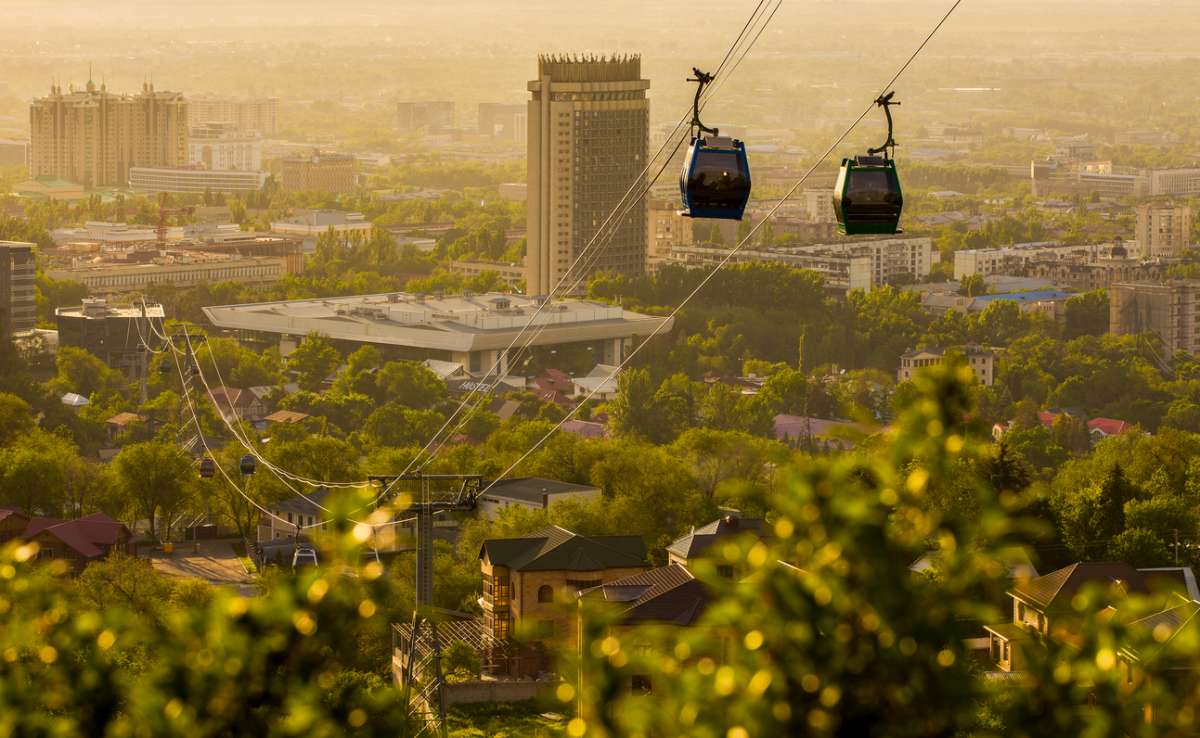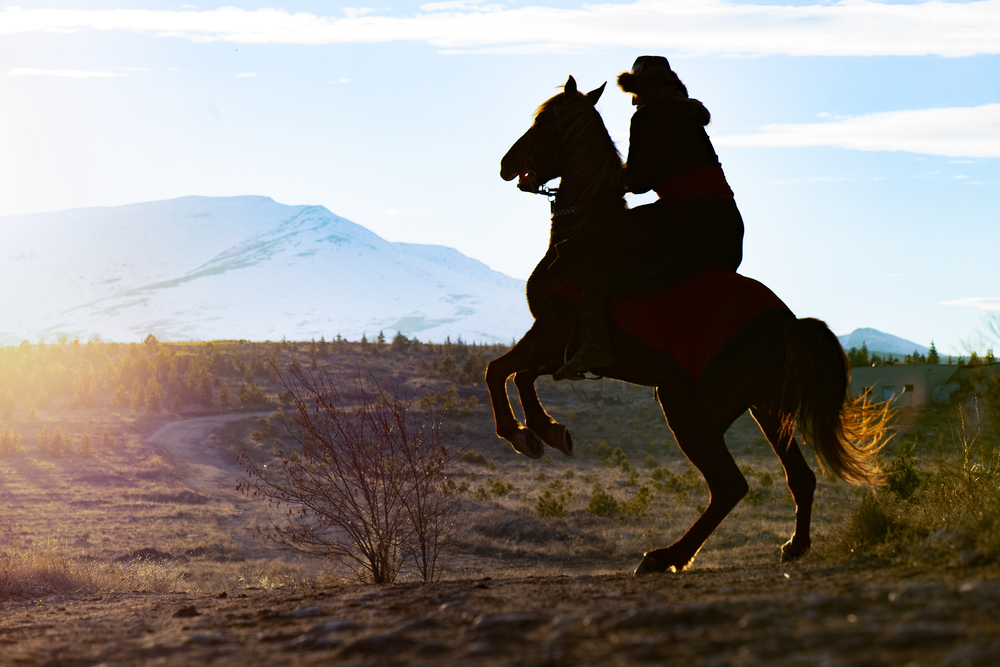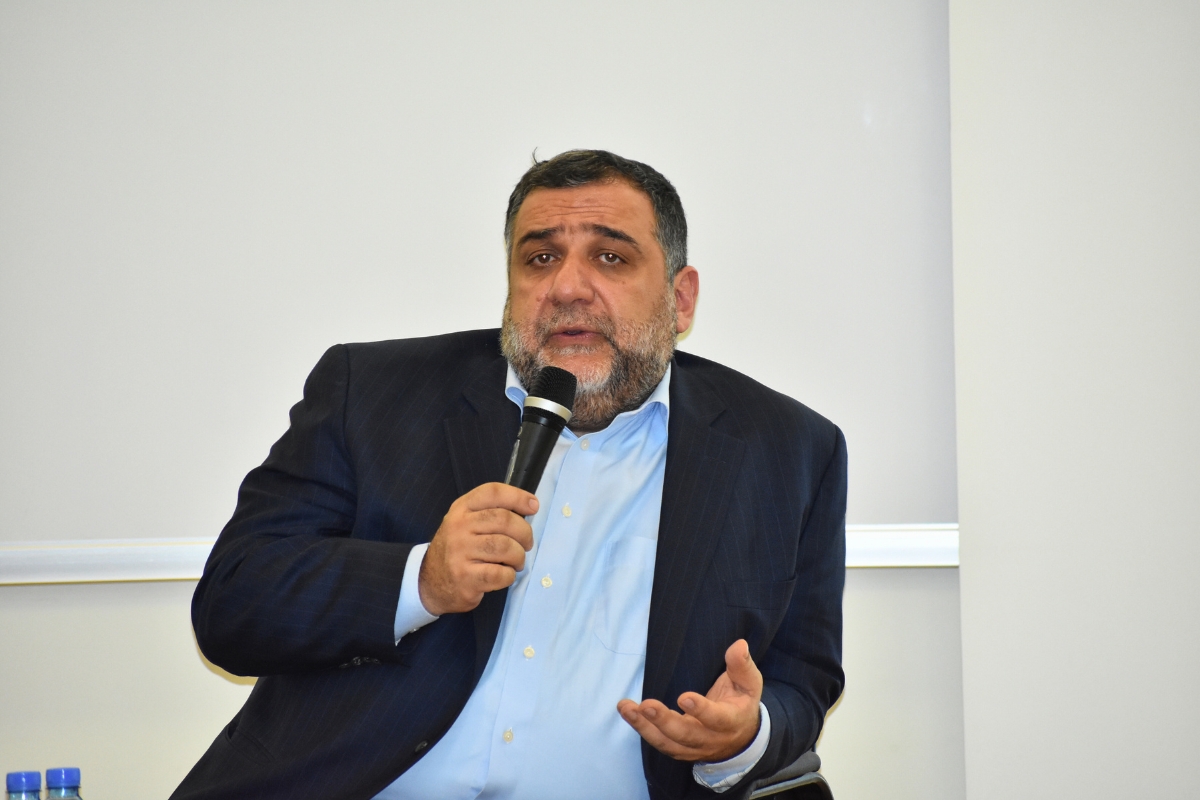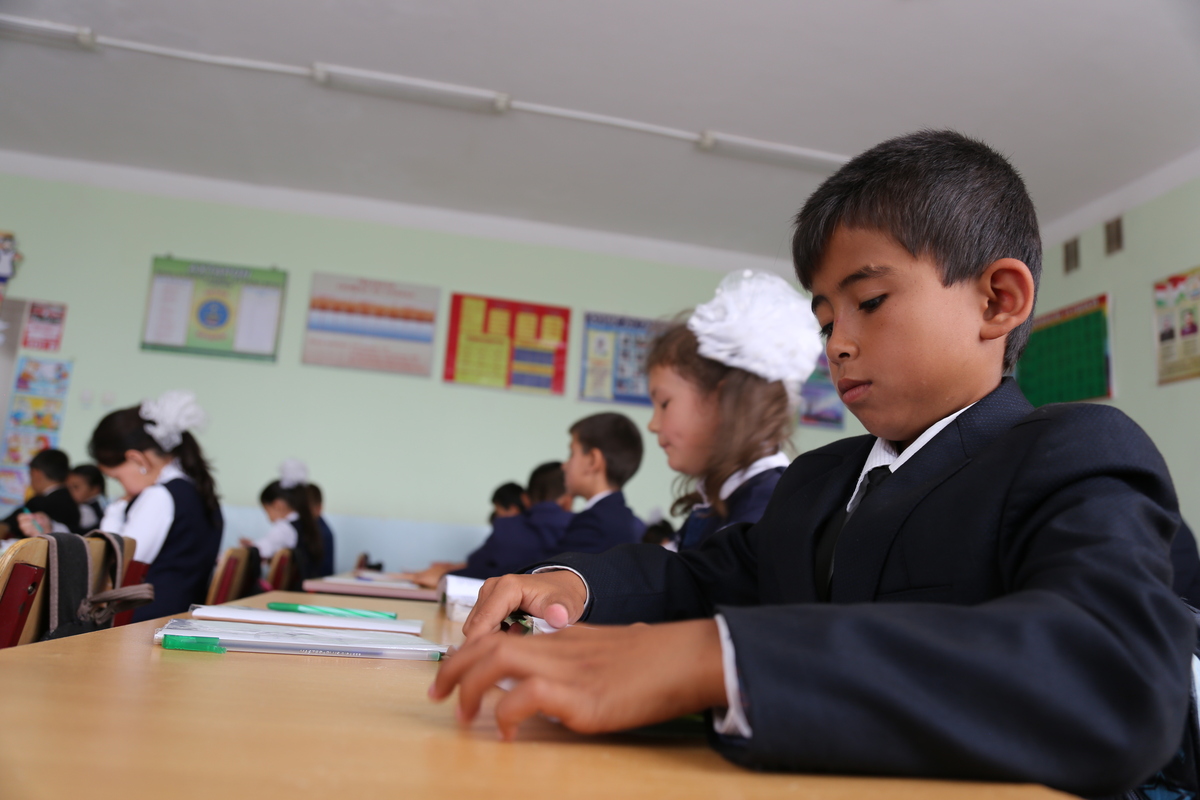- Home
- Soviet Modernist Architecture in Almaty
14 June 2023
Soviet Modernist Architecture in Almaty
What do you think of when you hear “Soviet architecture”? Gray building blocks? Emblems of arms and hammers? Lack of individuality? All are correct. Yet today, we take a look at when Soviet architecture produced something beyond its cliche buildings and explored different shapes, creating the style of Soviet Modernism.

Image: Pavel Mikheyev/Shutterstock
Soviet Modernism has become especially spread and well-preserved in Central Asia, which recently ignited the interest of a few Western photographers and journalists who went on to explore the region and document its architectural heritage. For example, two Italian photographers Roberto Conte and Stefano Perego, published Soviet Asia, a book in which they documented their journey exploring four Central Asian countries—Kazakhstan, Kyrgyzstan, Uzbekistan, and Tajikistan—and the buildings built from the 1950s until the fall of the USSR. What makes this style special is its focus on Eastern ornaments and individualistic design, making buildings stand out from typical Soviet architecture.
When it comes to Kazakhstan, its main Soviet modernist focal point is its biggest city and country’s financial hub, Almaty. As the former capital of Soviet Kazakhstan, the development of Almaty and its further transformation were thanks to Dinmukhamed Kunayev, the First Secretary of the Communist Party of Kazakhstan from 1959 to 1986. As reported by Owen Hatherley, a British journalist and writer, some believe that former president Nursultan Nazarbayev’s decision to move the capital to Astana was due to Almaty being viewed as a direct representation of the “Kunayev” period in Kazakh society. Hence, Nazarbayev’s determination to outshine the architectural achievements of Kunayev, whose legacy is becoming ever more memorable. Hatherley, although criticized by The Guardian as “a self-posited outsider who writes about surfaces,” wrote books and articles on Soviet architecture and described how despite all the innovations and money invested, Astana “doesn’t have ‘heritage’, and hence that what it does have is of little value”.
While Almaty today has many newly built skyscrapers—typical attributes of any post-Soviet city in the 21st century—it is its Soviet Modernist buildings that remain the main architectural attractions in the city.
Palace of the Republic
Image: Veniamin Kraskov/Shutterstock
Initially built in 1970 for the 100th anniversary of the birth of Vladimir Lenin and called Lenin’s Palace, today, the Palace of the Republic is one of the biggest concert halls in the country. Together with its name, it also lost a statue of Lenin that used to be in front of the building. After the collapse of the Soviet Union, it was replaced with a statue of Kazakh poet Abay Kunanbayev. The traditional Soviet Modernist design of the building is combined with Soviet layout and national elements. For example, the curved shape of the roof is a remnant of aiyrkalpak, the Kazakh national hat. Unfortunately, the Palace was reconstructed in 2010-2011, making it look cheap and tacky. As described by ArtGuide, before the reconstruction, it resembled Japanese architecture with its walls not touching the roof. However, now that resemblance is lost.
Hotel Kazakhstan
Image: Dias Jakupov
After the Palace of the Republic was finished, as part of the Dostyk Avenue development, it was decided to add a high-rise building next to it. However, due to Almaty’s seismically dangerous location—earthquakes destroyed the city in 1887 and 1911—it is reported that construction (of what turned out to be a 26-storey hotel) had to be coordinated with the Soviet State Committee of Construction. The high seismic resistance used when building the hotel proved to be a breakthrough. First opened in 1977, 46 years later, this 102-meter-high hotel withstood many earthquakes that are so common in the city. As the roof of the building is decorated with a crown, Hotel Kazakhstan remains a symbol of Almaty to this day.
Circus
Image: Cholpan/Shutterstock
Kazakh State Circus was built in 1970, and the project was a direct initiative of Kunayev. Its design was inspired by the shape of a yurt, yet again pointing to Soviet Modernism’s habit of giving buildings a unique look rooted in the country’s history. The top of the circus stretched to the sky was designed to “protect it from overheating”, but its white dome makes it look like the high peaks of mountains surrounding the city.
Arasan Baths
Image: tache/Shutterstock
Arasan Baths project was completed in 1982 and was one of the last architectural projects of Kunayev. As a Soviet Modernist building, Arasan’s design was inspired by the oriental style found in Turkistan, one of the most historic cities in Kazakhstan, and the “Spiritual Capital of the Turkic World” since 2021, according to the Organization of Turkic States. Building a bathing complex was necessary due to the lack of public baths in Almaty at the time. However, one of the project’s architects Kopsekbay Tulebaev told Vox Populi that it was also a result of an ongoing competition between Almaty and Tashkent, the capital of Uzbekistan. As the bathing complex in Tashkent was finished in 1974, just five years later, it was decided to build a bathhouse in Almaty as well. A white building with five domes on top from the outside it looks much more lavish on the inside. All the materials—from mosaic to ceramics and marble—were ordered from Czechoslovakia and Bulgaria.
Arasan continues functioning even today, although instead of an old-fashioned ‘bathhouse,’ it is now referred to as a ‘wellness and spa center.’ You can choose a Finnish, Russian, or Moroccan-style bath, each built with its own design accordingly, and you can even enjoy a Thai spa among many other spa varieties.
Ice-Skating Rink Medeu
Image: Roman Chekhovskoi/Shutterstock
Ask any Almaty resident what they love the most about living in Almaty, and you will hear a unanimous answer of “mountains.” It comes as no surprise that spending time in the mountains is one of the residents’ favourite activities. There, at 1691 meters above sea level, you can find the highest skating rink in the world, Medeu. It was designed by the Kazakh State Circus’ architect, Vladimir Katsev. Right after finishing the construction of the circus, he went on to improve Medeu, which from 1951 to 1970, was a regular ice-skating rink with benches instead of stands. According to Strelka Magazine, the project of improving Medeo was so grand that Kunaev had to personally call Leonid Brezhnev, the General Secretary of the Communist Party of the Soviet Union from 1964 to 1982, to get the budget approved. Today, the 10,5 thousand square meter ice field is surrounded by stands that can accommodate 8,5 thousand visitors, although, before its renovation in 2008-2009, the number of seats was 12,500. Luckily, the complex’s facade was not changed, and there is the original motif of two ice skaters.
The preservation of Almaty’s historic look is especially important today when developers continue mindlessly demolishing old Soviet buildings and building new skyscrapers in their place. To oppose it and preserve Almaty’s architectural heritage, the ArchCode Almaty project was founded by activists whose main goal is to involve the city’s population in the decision-making process of the city development and to spread the awareness of the importance of “the architectural identity of the city.”
Read this next






